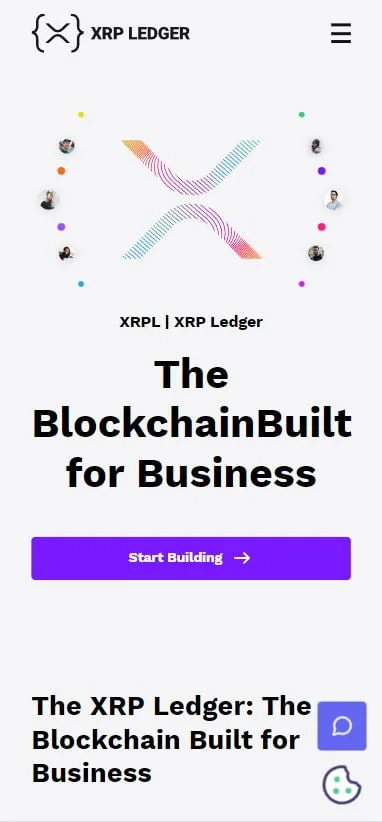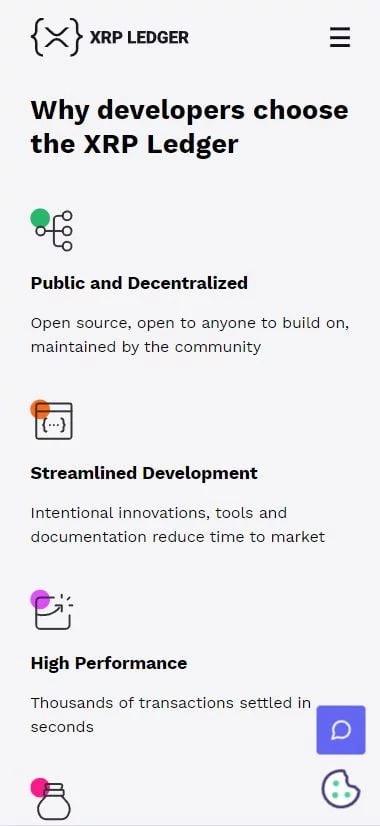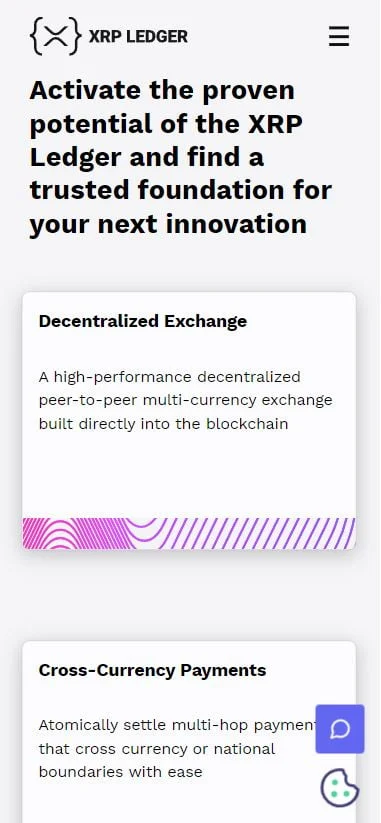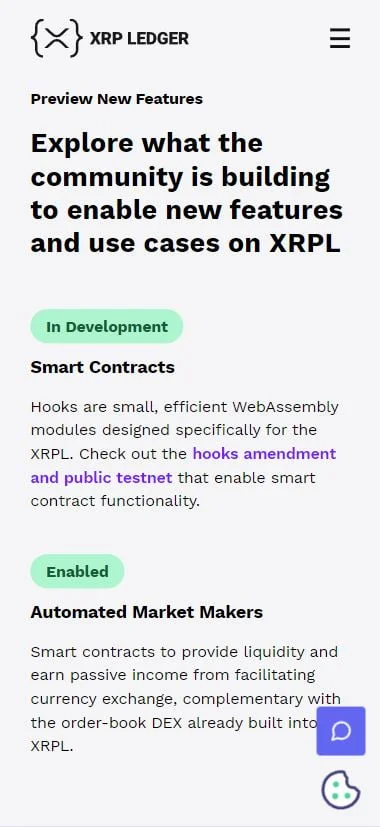Overview Ripple (XRP)
Ripple (XRP) is a digital payment protocol and cryptocurrency designed to facilitate fast, low-cost, cross-border transactions. XRP is the native token of the Ripple network, which was created to improve the efficiency of international money transfers and to address the limitations of traditional banking systems, such as high fees, slow transaction speeds, and limited accessibility. Ripple has gained significant attention due to its partnerships with major financial institutions, making it a key player in the blockchain-based payments and cross-border remittance space.
Key Features of Ripple (XRP)
- Ripple Network:
- The Ripple network (sometimes referred to as RippleNet) is a decentralized network of independent validators that enables the transfer of money across borders. RippleNet operates with a permissioned ledger where participants, such as financial institutions and payment providers, use a shared infrastructure to exchange money efficiently.
- Unlike other blockchain-based networks, Ripple is focused primarily on the enterprise and financial institutions market, aiming to replace outdated systems such as SWIFT for global payments.
- XRP Cryptocurrency:
- XRP is the native cryptocurrency of the Ripple network. It is used primarily as a bridge currency to facilitate transactions between different fiat currencies. For example, if someone in the U.S. wants to send money to someone in Mexico, XRP can be used to quickly convert between USD and MXN (Mexican Pesos) without relying on traditional foreign exchange markets.
- XRP offers instant settlement, allowing for the quick transfer of funds without the need for intermediaries or waiting several days for a cross-border payment to clear.
- Consensus Mechanism (Ripple Protocol Consensus Algorithm):
- Unlike Proof-of-Work (PoW) or Proof-of-Stake (PoS), Ripple uses a unique consensus algorithm called the Ripple Protocol Consensus Algorithm (RPCA).
- The RPCA does not require mining (as in Bitcoin) and is designed to validate transactions quickly and efficiently through a network of trusted validators. Validators are independent nodes in the network that confirm transaction validity and agree on the current state of the ledger. This consensus mechanism ensures that the network can process thousands of transactions per second with low energy consumption and at a fraction of the cost of traditional banking systems.
- Speed and Cost Efficiency:
- Ripple’s network is known for fast transaction speeds. Transactions using XRP typically settle in 3-5 seconds, which is significantly faster than traditional payment systems like SWIFT or other blockchain-based cryptocurrencies such as Bitcoin and Ethereum.
- Additionally, Ripple’s transaction fees are very low—typically fractions of a cent—which makes it an attractive option for international money transfers, especially for remittance corridors where small transaction amounts are often sent.
- Scalability:
- Ripple’s network is highly scalable, capable of handling up to 1,500 transactions per second (TPS), which is significantly more than Bitcoin and Ethereum in their current states. The network’s scalability allows it to handle large volumes of transactions efficiently, making it suitable for global financial institutions and payment providers.
- Use Cases:
- Cross-Border Payments: Ripple aims to improve cross-border payments by reducing the cost and time associated with international money transfers. Financial institutions and remittance companies can use RippleNet to settle payments in real-time across borders.
- Liquidity Provider: XRP is often used as a bridge currency to provide liquidity for currency exchanges, particularly in regions with low liquidity, helping to reduce the cost and time of converting between different currencies.
- DeFi (Decentralized Finance): Although XRP’s primary focus is on cross-border payments, the network has been exploring decentralized finance applications. Ripple has also partnered with various blockchain initiatives to bring XRP and the Ripple network to the DeFi space.
- RippleNet’s Clients and Partners:
- Ripple has established strong partnerships with major global financial institutions, payment providers, and banks, including Santander, American Express, PNC, Standard Chartered, and SBI Holdings. These institutions use RippleNet to provide fast, secure, and low-cost cross-border payment services.
- Ripple also works with MoneyGram, a leading money transfer service, to enable faster and more affordable remittances using XRP and Ripple’s technology.
- Ripple’s Solutions:
- xCurrent: Ripple’s xCurrent is a solution for banks and financial institutions that allows them to settle cross-border payments in real-time. xCurrent is a messaging platform that facilitates secure, instantaneous communication between institutions for initiating payments.
- xRapid: xRapid is Ripple’s liquidity solution that uses XRP as a bridge currency to facilitate cross-border payments. It helps to reduce the liquidity cost for financial institutions by allowing them to convert one currency to another more quickly and at lower cost using XRP.
- xVia: Ripple’s xVia is a payment interface that enables businesses and payment providers to connect to RippleNet for cross-border payments. It allows for the seamless and easy sending of payments without the need for intermediaries.
- Ripple’s Regulatory Issues:
- One of the most significant challenges facing Ripple (XRP) has been its ongoing lawsuit with the U.S. Securities and Exchange Commission (SEC). The SEC filed a lawsuit in December 2020, alleging that Ripple Labs, the company behind the Ripple network, conducted an unregistered securities offering by selling XRP. The lawsuit has led to significant uncertainty about XRP’s legal status in the U.S. and has impacted its price and adoption in the U.S. market.
- Despite the regulatory challenges, Ripple has continued to grow its presence in international markets and has won some important rulings in the case, suggesting that the outcome may be favorable to the company in the long run.
- Environmental Considerations:
- Unlike Proof-of-Work (PoW) based cryptocurrencies like Bitcoin, which require significant energy consumption for mining, Ripple’s consensus mechanism is energy-efficient and does not rely on mining. This makes XRP a more environmentally friendly alternative compared to many other cryptocurrencies.

XRP vs. Bitcoin and Ethereum
- Transaction Speed: XRP can settle transactions in 3-5 seconds, whereas Bitcoin and Ethereum transactions can take several minutes or more to settle.
- Transaction Fees: XRP transactions cost fractions of a cent, whereas Bitcoin and Ethereum transactions can have high fees, especially during periods of network congestion.
- Scalability: XRP can handle up to 1,500 transactions per second, whereas Bitcoin and Ethereum can handle only 7 TPS (Bitcoin) and 15-30 TPS (Ethereum) in their current states, with Ethereum aiming to scale through Ethereum 2.0 and layer-2 solutions.
- Purpose: XRP is primarily used for cross-border payments and remittance services, while Bitcoin is a store of value and peer-to-peer cash system, and Ethereum is a smart contract platform for decentralized applications (dApps) and decentralized finance (DeFi).
How to Use XRP
- Buy XRP: You can buy XRP from major cryptocurrency exchanges such as Binance, Coinbase, Kraken, Bitstamp, and others. Once purchased, you can store your XRP in a cryptocurrency wallet (e.g., Ledger Nano, Exodus Wallet, Trust Wallet, or XRP Toolkit).
- Send Cross-Border Payments: Ripple’s technology is used by financial institutions and remittance services to send instant, low-cost cross-border payments. If you are a business or institution, you can integrate Ripple’s solutions (like xCurrent or xRapid) to facilitate cross-border transactions.
- Use XRP for Liquidity: XRP can be used as a bridge currency for businesses that need liquidity for cross-border payments. This enables businesses to reduce the cost and time of currency conversion.
- Participate in Ripple’s Network: Ripple enables businesses to integrate RippleNet into their payment systems, which allows them to send and receive payments in real time using XRP or other supported currencies.

Conclusion
Ripple (XRP) is a blockchain-based solution designed for cross-border payments and remittance services, with a focus on speed, cost efficiency, and scalability. Its unique Ripple Protocol Consensus Algorithm (RPCA) enables low-cost, fast, secure transactions, making it an attractive alternative to traditional banking systems like SWIFT.
Although Ripple has faced regulatory challenges, especially with the SEC’s lawsuit, its technology is widely adopted by global financial institutions, and it has become a key player in enterprise blockchain solutions. The XRP token serves as a bridge currency within the Ripple network, helping to facilitate liquidity and improve the efficiency of international money transfers.






















Harran –
the king
Alvin Parlero –
Nice